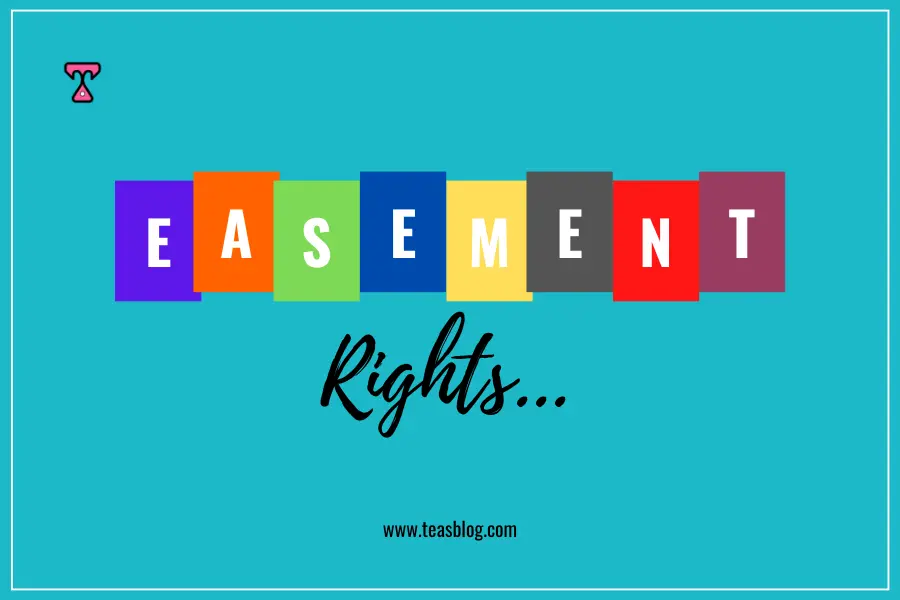Do you know your Easement Rights on your neighbour’s property?
I had a client who wanted to redirect water surface run-off from their site. I told him about his right of way to his neighbour’s property in draining rainwater from his site.
My client said he didn’t want to disturb or engage in any discussion with anyone, so he opted for sand-filling.
By the end of the day, he had spent a lot of resources trying to get the slope of his site to drain rainwater toward the entrance gate.
Know this. You have an Easement right to use your neighbour’s property to drain rainwater, underground cable works, etc provided your use does not inconvenience or endanger your neighbour.
Read Tired of Tripping Over Wires? False Floors can Help!
If your site is located at the centre surrounded by other sites such that you cannot drive into your site, you have a right of way through your neighbour’s property. This means that one of your neighbours will have to allocate a portion of their property that allows a driveway through.
Also, there is something called a “Public right of way” for pedestrians or vehicular users. If you acquire a property and you notice there is pedestrian access on that site, please maintain that access.
If you wish to fence your property, allow that pathway between your property and the next property. If you must close that pathway, create a public notice by applying to the planning authority for redirecting or extinguishing a public right of way.
Types of Easements
→ Right of Way Easement: This allows the holder to pass through someone else’s property.
→ Utility Easement: This permits the use of part of a property for utilities such as water, electricity, and sewage.
→ Easement by Necessity: This arises when a property is landlocked, providing access to the nearest public road.
→ Prescriptive Easement: This is established through continuous and open use of another’s property without permission over a period of time.
Read also Architecture Design Fees: How It’s Calculated.
Activating Easement Rights
→ By Mutual Agreement: The property owner and the individual requiring the easement can come to an agreement. This agreement should be documented in writing and registered with the appropriate land registry to be legally binding.
→ Grant or Deed of Easement: A formal document that outlines the easement rights. This document should be prepared by a legal professional, signed by both parties, and registered with the land registry.
→ Court Order: If an agreement cannot be reached, the interested party can seek a court order. The court can grant an easement based on necessity or prescription.
→ Statutory Easements: Some easements are granted by statutes, such as those for utilities. These typically require compliance with specific regulations and applications to relevant government bodies.
Read How to Effectively Read a Floor Plan like a Pro.
Steps to Activate Easement Rights
→ Identify the Need for Easement: Clearly define the purpose of the easement and the specific part of the property required.
→ Consult a Legal Professional: Engage a property lawyer to help draft the necessary documents and guide you through the process.
→ Negotiate with the Property Owner: Discuss and reach a mutual agreement with the property owner. Ensure all parties understand the terms used and documented.
→ Prepare and Register Documents: Prepare a Grant or Deed of Easement. This document should be signed by both parties and registered with the local land registry office.
→ Seek Court Intervention if Necessary: If negotiations fail, file a lawsuit seeking an easement. Present evidence of the necessity or long-term use of the property.
→ Comply with Statutory Requirements: For utility easements, follow the specific procedures laid out by relevant government agencies. Submit necessary applications and comply with regulations.
Legal Framework
- Land Use Act of 1978: Governs land ownership and use in Nigeria. Easements must comply with this act.
- Property and Conveyancing Law: Applicable in some states, providing additional regulations on easements.
In conclusion, activating easement property rights in Nigeria involves legal documentation and, often, negotiation or court intervention. It’s crucial to consult with a property lawyer to navigate the complexities and ensure all legal requirements are met.
Contact us for assistance.





